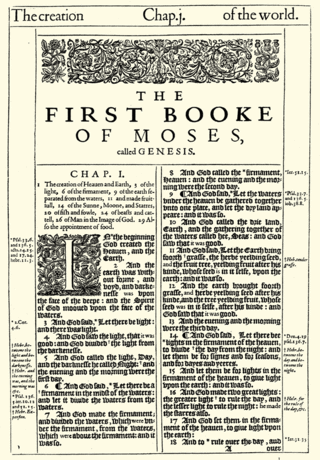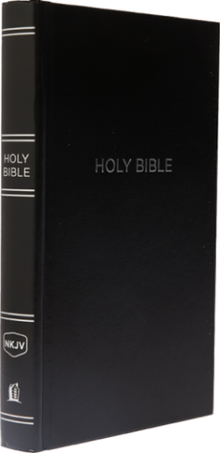
Textus Receptus refers to the succession of printed Greek New Testament texts starting with Erasmus' Novum Instrumentum omne (1516) and including the editions of Stephanus, Beza, Elzevir, Colinaeus and Scrivener. Additionally, although not being derived from the work of Erasmus, some such as the Trinitarian Bible Society also associate the Complutensian Polyglot with the Textus receptus tradition.

The King James Only movement asserts the belief that the King James Version (KJV) of the Bible is superior to all other English translations of the Bible. Adherents of the King James Only movement, mostly members of certain Conservative Anabaptist, traditionalist Anglo-Catholic, Conservative Holiness Methodist and Independent Baptist churches, believe that the King James Version has been providentially preserved to be a perfect translation of the Bible into English, and they also generally believe that all other English translations of the Bible which were published after the KJV was published to be corrupt.

The Textus Roffensis, fully titled the Textus de Ecclesia Roffensi per Ernulphum episcopum and sometimes also known as the Annals of Rochester, is a mediaeval manuscript that consists of two separate works written between 1122 and 1124. It is catalogued as "Rochester Cathedral Library, MS A.3.5" and as of 2023 is currently on display in a new exhibition at Rochester Cathedral in Rochester, Kent. It is thought that the main text of both manuscripts was written by a single scribe, although the English glosses to the two Latin entries were made by a second hand. The annotations might indicate that the manuscript was consulted in some post-Conquest trials. However, the glosses are very sparse and just clarify a few uncertain terms. For example, the entry on f. 67r merely explains that the triplex iudiciu(m) is called in English, ofraceth ordel.

The New King James Version (NKJV) is a translation of the Bible in contemporary English. Published by Thomas Nelson, the complete NKJV was released in 1982. With regard to its textual basis, the NKJV relies on a modern critical edition for the Old Testament, while opting to use the Textus Receptus for the New Testament.

Frederick Henry Ambrose Scrivener was a New Testament textual critic and a member of the English New Testament Revision Committee which produced the Revised Version of the Bible. He was prebendary of Exeter, and vicar of Hendon.

Tytthoscincus is a genus of skinks. Originally defined to include a few species from the Philippines, the genus now includes many species from South-East Asia in general.
Textual variants in the Gospel of Luke are the subject of the study called textual criticism of the New Testament. Textual variants in manuscripts arise when a copyist makes deliberate or inadvertent alterations to a text that is being reproduced. An abbreviated list of textual variants in this particular book is given in this article below.

Tytthoscincus temasekensis, common name Singapore swamp skink, is a species of skinks belonging to the family Scincidae.
Tytthoscincus aesculeticola is a species of skink. It is endemic to Borneo and is currently known from Sarawak and Sabah.
The Zamboanga sphenomorphus is a species of skink. It is endemic to the Philippines.
Tytthoscincus batupanggah, also known as the cursed-stone diminutive leaf-litter skink, is a species of skink. It is endemic to Borneo and only known from its type locality Gunung Penrissen in Sarawak, East Malaysia.

Tytthoscincus biparietalis is a species of skink. It is endemic to the Philippines. It has been called the Sulu sphenomorphus as it was originally placed in the genus Sphenomorphus and the type locality is the Sulu Archipelago.
Tytthoscincus bukitensis, also known as the Fraser's Hill forest skink , is a species of skink. It is endemic to Peninsular Malaysia.
Tytthoscincus butleri, also known commonly as Butler's forest skink, is a species of lizard in the family Scincidae. The species is native to Malaysia and Thailand.
Tytthoscincus hallieri is a species of skink, a lizard in the family Scincidae. The species is native to Southeast Asia.
Tytthoscincus kakikecil, the Fraser’s Hill forest skink, is a species of skink. It is endemic to Malaysia.
Tytthoscincus leproauricularis, the scaly-eared diminutive leaf-litter skink, is a species of skink. It is endemic to Malaysia.
Tytthoscincus monticolus, the Sungai Bubu forest skink, is a species of skink. It is endemic to Malaysia.
Tytthoscincus perhentianensis, the Perhentian Island forest skink, is a species of skink. It is endemic to Perhentian Islands in Malaysia.
Tytthoscincus temengorensis, the Temengor forest skink, is a species of skink. It is endemic to Malaysia.






